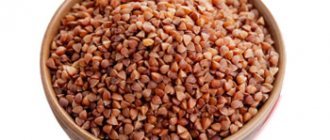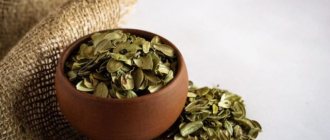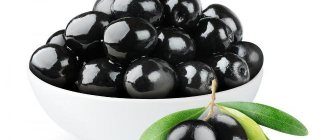Sorrel is a herbaceous plant that many summer residents cultivate in their own garden plots. It is used as a food additive, it is used to make soups and salads, and is also used for medicinal purposes. Wild varieties of this plant can be found everywhere, as it is extremely unpretentious and grows quickly. The health benefits of sorrel are invaluable, but sorrel, as this herb is also called, also has a certain list of contraindications. You should definitely know them before taking sorrel as a medicine or eating it.
Product Features
Sorrel bed in the garden
Sorrel belongs to the buckwheat family and appeared many centuries ago. The plant consists of rather fleshy and large leaves of grass on long cuttings. They have an ovoid-oblong shape. The inflorescences of the plant are inconspicuous, paniculate, and have a stem up to 1 m high.
Sorrel grows well in almost any conditions. The gardener can notice the first shoots, which can be harvested very soon, in early spring, after the snow cover has melted. The sorrel harvest begins from mid-April in the European part of the country and from mid-May in regions with cold climates until the end of July. It is during this period that the plant has the greatest number of useful components and properties.
You can collect sorrel leaves when they reach a size of about 10 - 12 cm. Collection can be done about 2 times a month as new leaves grow. It is noteworthy that not only cultivated varieties of sorrel are used in cooking, but also wild herbs.
How to preserve sorrel?
After purchasing or harvesting, sorrel must be immersed in cold water and any insects removed. There are several most effective ways to store sorrel:
- Vacuum storage . To do this, you need to rinse and dry the sorrel, place it in a vacuum bag or container and pump out the air. Store vacuum-sealed sorrel in the refrigerator or freezer;
- Drying. To do this, rinse the grass, dry it with a paper towel and place it on dehydrator sheets. It is recommended to dry sorrel at a minimum temperature of 35 °C or use the “Herbs” mode;
- Conservation. To do this, sorrel leaves need to be crushed in a blender with water (add depending on the desired consistency). The resulting mass must be boiled, placed tightly in sterilized jars and closed.
To increase the shelf life of sorrel for a short period, you need to put it in a large container with water and put it in the refrigerator. In this state, the greens will be fresh for three days.
Varieties of beneficial herbs
Horse sorrel
Most varieties of sorrel are not used in cooking, but can be used to prepare various decoctions, infusions and traditional medicine recipes. They grow throughout Russia.
However, most often common sorrel is used, which is also called sour. It can be cultivated in your own garden plot or found in fields and forest edges, among weeds.
Horse sorrel and curly varieties can also be found near rivers and lakes. The curly variety has a pleasant hint of lemon in the taste of the product. For cooking, young shoots are used, which are quite fleshy and pleasant to the taste. Obsolete shoots are valued in folk medicine, as they accumulate large amounts of vitamin C and various acids.
Horse sorrel can be found in river valleys, steppes and forests. It has a specific bitter taste that repels animals. However, it has a high content of useful substances and is used in folk medicine. In addition, if it is dried properly, the bitterness disappears.
Chemical composition of plant leaves
The rich chemical composition of sorrel provides enormous benefits to human health. The vitamins and minerals that provide the chemical composition of the plant give it great value for human health. At the same time, sorrel has a low calorie content, no more than 20 kcal per 100 g of leaves, and the content of proteins, fats and carbohydrates is also low .
The product contains:
- a large amount of ascorbic acid, as well as oxalic and pyrogallic acids;
- antioxidants;
- tannins;
- fatty acid;
- high content of minerals (especially potassium, as well as magnesium, phosphorus, calcium, iron and others);
- groups of vitamins (PP, C, U, beta-carotene and others).
The variety of useful components that make up sorrel has enormous benefits for human health. That is why boiled sorrel, as well as fresh herbs, are indispensable in cooking and in the complex treatment of various pathologies.
Useful properties of sorrel
The rich chemical composition of the plant suggests its invaluable benefits for the body. It has a beneficial effect on the body of men and women. The variety of vitamins and mineral components in the plant make it a truly healing natural remedy that can be used in the complex treatment of various pathologies.
The benefits of sorrel are enormous:
- has hemostatic properties, works as an effective pain reliever; the leaves and roots of the plant are widely used for the rapid healing of wounds and burns, as well as for their disinfection;
- provides good prevention of cancer, effectively removes dangerous toxins and carcinogens from the body;
- a small portion of sorrel has a binding effect, it is good to use for intestinal dysfunction, at the same time, increased dosages are used as a mild laxative;
- tones well, improving physical and mental activity;
- replenishes the lack of iron in the body and promotes its rapid absorption; stimulates the production of gastric juice, accelerating the process of processing food entering the stomach;
- fresh sorrel leaves effectively reduce blood pressure, without a sharp jump, helping to normalize the patient’s condition;
- improves the condition of hair and nails, strengthening them, promotes increased collagen production and normalization of skin condition;
- oxalic acid perfectly reduces levels of bad cholesterol in the body;
- Reduces headaches if consumed fresh.
The health benefits of sorrel are high for both women and men. This product is useful to eat fresh, for example in salads or simply by chewing the sour leaves. You can also eat boiled sorrel, for example in soup.
What are the benefits of sorrel?
The variety of vitamins in its composition makes the plant a truly healing remedy. Let's look at the beneficial properties of sorrel:
- Analgesic and hemostatic effect. Leaves and roots are used to quickly heal wounds and prevent inflammation.
- Cleansing the body of toxins and carcinogens. The plant is useful for preventing cancer.
- Laxative effect, normalization of stool and cleansing of the intestines. A small portion may have the opposite effect.
- Increasing the overall tone of the body, improving physical and mental activity.
- Replenishing iron deficiency and helping in its absorption.
- Increased stomach acidity. The healing herb stimulates the production of gastric juice.
- Fresh sorrel reduces blood pressure without causing a sharp drop.
- Strengthening nails and hair, improving skin condition.
- The benefit of oxalic acid is to reduce cholesterol levels.
- Eating fresh sorrel relieves headaches.
The plant is of particular value for both the female and male body.
For women
The use of the plant is indicated for women during menopause. Sorrel alleviates the unpleasant symptoms of this period:
- relieves headaches;
- normalizes blood pressure;
- fights uterine bleeding;
- reduces sweating.
For men
Sorrel normalizes the functioning of the male genitourinary system:
- eliminates inflammation and pain;
- fights stagnation;
- improves blood circulation in the prostate gland;
- protects against infections.
Sorrel juice also helps in the fight against infertility.
For weight loss
The herb has a beneficial effect on the body when losing weight. With its help, you can get rid of harmful substances in the stomach and intestines, as well as improve metabolism, which is especially important when losing weight. Regular consumption of sorrel helps get rid of swelling by removing excess water and salts.
For men's health
Making sorrel salad
It is useful for men to eat sorrel raw or use it as part of various dishes. It is also recommended to prepare decoctions and infusions based on natural substances rich in vitamins and mineral components. This plant helps men's health greatly.
Among the main properties of sorrel for men's health are:
- quick relief of inflammation and pain;
- effective fight against congestion;
- improving blood circulation in the prostate gland;
- reliable protection against various infections and pathogenic microorganisms.
As a result, the man feels significant improvements in the functioning of important body systems. Sexual desire increases, pain during urination and frequent urge to go to the toilet disappear.
A man who regularly consumes sorrel will quickly feel improvements, especially in the genitourinary system. This is important for representatives of the stronger sex who experience problems with urination and sexual desire.
With regular use of the product, men's health will become stronger and they will forget about the painful problems that bothered them before introducing sorrel into their diet.
Benefits of sorrel for women's health
It is advisable to consume sorrel leaves fresh.
The enormous benefits of this natural remedy are also observed for the female body. It is effective when used regularly in sufficient quantities, both raw and cooked. The plant is especially effective when a woman approaches menopause. The plant effectively reduces the intensity of the manifestations of this difficult stage of a woman’s life and helps her survive it painlessly.
The benefits of sorrel for women's health are:
- normalization of blood pressure indicators;
- relieving symptoms of headaches, migraines;
- combating uterine bleeding;
- decreased sweating.
This natural remedy effectively helps not only women who have reached a “wise” age and entered a new stage of life. It helps with painful menstruation and various ailments. It also tones well and improves performance, and helps relieve stress easily.
It has been scientifically proven that juice squeezed from fresh sorrel collected at a certain period helps fight infertility in women. It should be used only as prescribed by a doctor, having previously undergone the necessary medical examinations.
Use during pregnancy
During pregnancy, sorrel should be consumed in small quantities.
During pregnancy, the mother's body supplies the developing body of the baby in the womb with various components. At this time, calcium is very important for the child, as a necessary element for the normal development of the body.
Oxalic acid, contained in large quantities in the herbaceous plant, slows down the absorption of calcium. That is why during pregnancy it is better not to overuse this product.
It is important to know that the effect of oxalic acid can be neutralized through the use of dairy products. For example, season a salad of fresh vegetables and herbs with sour cream. This will help reduce the risk of calcium deficiency in your baby.
During breastfeeding, the grass, on the contrary, is very useful. It can significantly increase the amount of mother's milk and, if necessary, reduce its bitter taste. During lactation, sorrel can be eaten in unlimited quantities, within reason, of course.
Benefits and harms in diseases
For type 2 diabetes
It is useful to eat sour grass for diabetes. It contains low levels of carbohydrates and can gently reduce blood sugar.
Also, in diabetes, leg diseases are often observed, accompanied by constant and severe itching. Eating a handful of wild sorrel for 5 days can get rid of the unpleasant symptom.
For pancreatitis
Gastroenterologists prohibit including green leafy vegetables in the diet for pancreatitis. It is important to consider that this ban also applies during the period of remission. By “attacking” the pancreas, acids can aggravate the disease and provoke an acute attack.
Can children eat sorrel?
Sorrel soup
It is strictly not recommended to add sorrel to a child’s diet before he or she reaches three years of age . Oxalic acid, contained in abundance in the product, can harm the body of a small child.
A healthy natural product can be introduced into the diet only after reaching 3 years of age, gradually. To begin with, a few leaves are chopped and added to salads. After the body gets used to the new product, you can try sorrel soup.
It is important to use only young leaves in the children's menu. In this case, the harm from sorrel will be minimal for the child’s body. Mature leaves contain a large amount of salts, which can lead to an increase in their amount in the baby’s urine. In addition, product consumption standards should be observed. Adults are not recommended to use sorrel in their diet more than 2 times a week. It is better for kids not to use sorrel in the menu more than once every 7-10 days.
The benefits and harms of sorrel during pregnancy
Although sorrel has amazing healing properties, it should be used very carefully by expectant mothers while pregnant or breastfeeding.
Why? The fact is that a significant acid content in the plant can block the full absorption of calcium by the body. The element is an important “building material” for the unborn baby and affects the functioning of a woman’s cardiovascular system.
During pregnancy, the “spring king” can pose a danger to the kidneys, as it can disrupt their functioning.
How to neutralize dangerous acid? It is necessary to combine sorrel dishes with fermented milk products. Therefore, it is better to season “green” cabbage soup with sour cream and whey. This prevents the accumulation of oxalic acid oxalates in the body tissues.
In what cases is it advisable and safe for expectant mothers to include sorrel in their diet? It will be useful:
- for sore throats;
- with inflammatory processes in the bladder;
- with frequent and loose stools;
- for diseases of the intestines and liver.
If you take pharmaceutical preparations with calcium to strengthen your teeth and bones, then wild sorrel will be perfectly absorbed with them.
It is not recommended for pregnant women to consume sorrel for gout, urolithiasis, and gastrointestinal disorders. Remember that the plant can be dangerous for the kidneys, irritate the gastric mucosa, and cause erosion.
Application of sorrel
Sorrel jelly
Sorrel is widely used not only in cooking for preparing delicious dishes. Decoctions and infusions based on this natural remedy are used in folk medicine recipes, as well as in cosmetology.
The leaves and stems of the plant help restore and strengthen the body's immune system. Health becomes strong and is able to resist various viruses and colds. This is especially true during the off-season and the activation of viral pathologies.
For gallbladder diseases, squeezed sorrel juice helps dilute bile. Various dishes from the product are recommended for hemorrhoids and rectal fissures. Colitis, dysentery and other diseases of the digestive system are effectively treated with sorrel leaves.
Various decoctions and infusions help fight skin diseases and heal wounds of various origins well. They are also indicated for the development of food allergies. A good remedy is sorrel juice for diabetes. Due to its low carbohydrate content, it helps to dramatically reduce blood sugar and cholesterol levels, normalizing the patient’s indicators and condition.
High iron content helps fight anemia. And vitamin C, also contained in large quantities in the product, helps in its absorption and normalization of hemoglobin at the required level.
Sorrel has proven itself well in cosmetology. To improve the condition of the skin and hair, various masks are prepared based on the plant with the addition of vegetable oils. They help activate collagen production, heal and cleanse the skin, improve hair condition, promoting active growth of hair follicles.
Features of a medicinal plant
What properties does common sorrel have? When and how to prepare it? For what diseases should this plant be taken? Can it pose a danger and harm to health?
Area
There are 150 species of this plant in nature. Most of them are weeds. Some varieties can only be found on the Eurasian continent, others - in North and South America, Asia and even in some regions of Africa and Australia. But the plant takes root best in temperate northern latitudes. Favorite habitat is meadows, but not in the floodplain area. Sorrel grass can be seen in ravines, damp meadows, forest edges, and on the banks of reservoirs. In addition, it is cultivated along with other vegetable plants. There is no need to give a botanical “portrait” of sorrel - it is familiar to everyone, young and old.
Kinds
What plant varieties, besides sour sorrel, are considered medicinal raw materials?
- Small sorrel, or passerine sorrel. People also call it sorrel because of its small size and small spear-shaped leaves. One of the most ancient specimens of the buckwheat family. It has a wide distribution area: it can be seen in Britain and Crete, Japan and Siberia, the USA and the countries of Asia Minor. Tolerates landscape changes, fires and frequent mowing well. It is valued for oxalic, tartaric acid, carotene, glycosides, and oxalates. Used in medicine and cooking.
- Curly sorrel. It grows in the wild, but is often “cultivated” and found near housing. It is a strong weed: due to its powerful root, it is difficult to eliminate. Most of the valuable substances are contained in the root and rhizome. In folk medicine it is used in the same way as common sorrel.
- Horse sorrel, or sorrel. This variety is popular in folk medicine and respected in traditional medical practice. Most often used as a mild laxative and astringent, hemostatic and blood purifying medicine. Used for the treatment of hemorrhoids, constipation, respiratory organs, hypertension, prevention of vitamin deficiency. Read more about the medicinal properties of horse sorrel in our other article.
Harvesting sorrel
Depending on climatic conditions, sorrel begins to bloom in April or May. Before flowering, it is necessary to collect its leaves. Although there is information that raw materials can be harvested in June. The leaves are cut to the very root, tied into bunches, and dried. Often it is necessary to dry the raw materials artificially, because the leaves contain a lot of moisture. It is recommended to update raw materials annually. The root of the plant is considered healing; it can be dug up in October. Ancient Russian herbalists mention that the roots give a good laxative and anthelmintic effect, and the leaves are gentler, normalize digestion, and contain a lot of vitamins. In addition to drying, there are other methods of preparing for future use: freezing and canning using sterilization or a large amount of salt. In this form, sorrel is eaten in winter.
Healing effect
The most valuable substances in the chemical composition:
- potassium oxalate;
- iron salts;
- oxalic acid;
- anthraquinone (gives a laxative effect);
- flavonoids;
- tannins (astringent effect);
- resins;
- glycosides;
- vitamins K, C, A;
- proteins;
- lipids.
Pharmachologic effect:
- vitamin;
- antiscorbutic;
- restorative;
- choleretic;
- laxative;
- antiallergic;
- hematopoietic;
- blood purifying;
- hemostatic;
- antitumor;
- antiseptic;
- bactericidal.
Indications
The beneficial properties of sorrel in medicine have been proven not only by time, but also by experimental therapy in medical institutions. During the treatment of patients, not only the indications for the use of sorrel were determined, but also a number of strict contraindications.
- Digestive system. The herb improves appetite, normalizes digestion, acts as a mild choleretic agent, and helps with diseases of the liver, gall bladder, and bile ducts. Stimulates intestinal smooth muscles and peristalsis, reduces fermentation processes. Thanks to anthraquinone, it acts as a natural laxative. Treats constipation, hemorrhoids, rectal fissures, stops bleeding from hemorrhoids. You can take the herb for gastritis (only with reduced secretion!). In small doses it acts as an astringent and helps with dysentery.
- External use. Decoctions and infusions can be used to gargle for sore throat, tonsillitis, and pharyngitis. Externally, it is used to treat purulent wounds, boils, skin rashes due to lichen, neurodermatitis, eczema, and eliminates itching.
- Multivitamin remedy. In terms of its complex of vitamins and minerals, this plant has no equal among other cultivated leaf vegetables. In early spring, when the body is exhausted after a long winter, this is the best way to strengthen immunity and vitality. Sorrel is often prescribed for vitamin deficiency. It is also a good preventative against anemia and scurvy.
- For endocrine system disorders. It normalizes metabolic processes, therefore it helps with diabetes mellitus in complex therapy. Stimulates metabolic processes, which leads to weight loss and improved general condition.
- Natural detoxifier. Detoxification is a measure to cleanse the body (blood, liver, intestines) of toxins and poisons. Sorrel acts like a “broom” that sweeps away all harmful substances from the body. Therefore, it is prescribed as an “antidote” for food poisoning, poisoning with radioactive elements, and chemicals. For the same reason - to cleanse the body - it is prescribed internally for allergic diseases.
Herbs will also be useful for cardiovascular diseases and hypertension. Promotes vasodilation, breakdown and removal of cholesterol from the body. In homeopathy, tinctures and granules are prescribed for respiratory diseases, coughs, and diarrhea.
What are the contraindications for sorrel? Despite its great benefits for the body, it can be toxic due to oxalic acid and its salts. Prohibited for diseases of the urinary system, blood clotting, osteoporosis, gout, stomach ulcers, gastritis with high acidity, acute colitis and enterocolitis. Do not violate the dosage! Side effects: diarrhea, vomiting, stomach and intestinal cramps, difficulty breathing and urination.
Side effects from eating sorrel
Despite the huge number of beneficial properties and the high content of active components in the product, sorrel is also harmful to human health. It must be taken into account when using the product for therapeutic purposes.
A direct contraindication for consuming sorrel in any form is pancreatitis. Even in a state of remission, the product can cause harm to a weakened body.
In addition, there are other health warnings:
- an increased content of oxalic acid increases the risk of developing or worsening urolithiasis;
- acid also interferes with the normal absorption of calcium, which sooner or later leads to osteoporosis;
- uremia and gout are also at risk of developing with excessive consumption of oxalic acid;
- acid is contraindicated in case of increased stomach acidity, inflammatory processes in the kidneys and intestines, as well as peptic ulcers.
Even if there are no direct contraindications to the use of the product, it is better to limit its use in food so as not to cause irreparable harm to health. The recommended dose is no more than 1 – 2 times a week in fairly limited quantities.
Contraindications and side effects
Like all useful medicinal herbs, sour sorrel has a number of contraindications for consumption due to the large amount of oxalic acid and salts:
- osteoporosis;
- gastritis;
- diseases of the urinary system;
- stomach ulcer;
- allergic reaction;
- enterocolitis and acute colitis.
Despite the rich chemical composition, pregnant women should avoid eating sorrel. So, oxalic acid, which is part of the composition, impedes the absorption of calcium and can provoke exacerbations of the urinary system.
Children under three years old should also not consume the plant. Consumption of common sorrel in heat-treated or raw form can lead to digestive disorders. This can cause increased gas formation in the intestines, indigestion and cramps. If necessary, it is better to consult a specialist.
Side effects in case of overdose:
- vomit;
- labored breathing;
- urination;
- diarrhea;
- spasms of the stomach and intestines.
How to properly collect and prepare sorrel?
Preparing sorrel for the winter
The leaves of the plant are cut off only when they reach 10–12 cm in length. The plant should be cut at a distance of 3–4 cm from the soil surface. It is important to do this before the sorrel outgrows.
To preserve a healthy product for the winter or prepare it for later use, it needs to be frozen. To do this, the leaves are thoroughly washed and dipped in boiling water for 1 minute. After this, you need to place the leaves on paper towels and dry them thoroughly, and then put them in bags and put them in the freezer.
This method of preparation makes it possible to preserve all the beneficial properties of the product. In addition, in winter it is very useful to eat delicious sorrel soup, rich in vitamins, or add greens to a fresh salad.
Harm and contraindications of sorrel for humans
The leafy vegetable should not be eaten by people who suffer from:
- gastritis against the background of increased acidity,
- ulcer of the duodenum and stomach,
- gout,
- osteoporosis,
- inflammatory processes in the intestines and kidneys.
Also, people with metabolic disorders, including problems with the salt balance in the body or gout, should not get carried away with the plant.
It is not advisable to consume leaves from old plants. You should use the herb of the first year to saturate the body with vitamins as much as possible. This is especially important for children, pregnant women and people weakened by illness.
Doctors do not recommend using “grass” for a long time. What is this connected with? The plant contains large amounts of oxalic acid, which can cause metabolic disorders and the formation of stones (sand) in the kidneys.
When preparing food, it should be taken into account that during heat treatment - for example, when adding sorrel to a boiling broth - the formation of inorganic oxalic acid occurs.
Advice : Try to use the grass only until July, only the top leaves. Young shoots at this time contain a minimal amount of oxalic acid.
When preparing “green” dishes, do not use aluminum or cast iron containers, since oxalic acid reacts with the metal and releases toxic substances that are harmful to the body. This is especially dangerous for expectant mothers during pregnancy, breastfeeding, and for children under three years of age.
Video
How to prepare sorrel for the winter easily and quickly
Cooking methods
Sorrel decoction
In folk medicine, infusions and decoctions are prepared from sorrel, which are used in the complex treatment of various diseases. To prepare a healthy decoction from the plant, rich in vitamins, you will need only 5 g of leaves and 400 ml of water. The leaves are placed in boiled water and the composition is boiled for another quarter of an hour. Then the broth is allowed to brew and filtered.
You can make oxaline juice, which perfectly stimulates the production of bile. To do this, crushed leaves are passed through a meat grinder or blender, and then the juice is squeezed out of them. You need to take it 1 tbsp. three times a day. The course and dosage are individually prescribed by the attending physician.
In cosmetology, masks are actively used for the skin of the face and hair. A mask made from 30 g of sorrel with the addition of black currants and strawberries is well suited for nourishing the skin of the face; for greater effect, you can add a little sour cream. The mask is applied to the face in a thick layer and left for 15 - 20 minutes and then washed off.
For hair, a mask is prepared from young leaves of the plant crushed in a blender with the addition of vegetable oil. It is applied to dry hair and the head is wrapped in cling film and a towel on top. You need to wear the mask for 2 hours and then rinse with warm water and regular shampoo.
In cooking, the most popular sorrel dish is soup. This healthy dish helps in the treatment of various diseases and is a very tasty treat for the whole family. The soup can be eaten both cold and hot. The low calorie content allows you to consume it even if you are on a diet.
Medicinal properties of sorrel juice and dosage
Consumption of sorrel has a positive effect on almost all body systems. Sorrel should be consumed fresh, since after heat treatment most of the beneficial substances are destroyed. The best way is to prepare sorrel juice. The drink turns out to be very rich in taste and vitamins, so when taking it it is important to follow the dosage: 45-75 ml per day will be quite enough. Sorrel juice is good for:
|
Sorrel juice is also perfect for external use: it is used to treat purulent wounds or inflammations on the skin. It is recommended to lubricate problem areas with sorrel juice or apply a bandage moistened with sorrel juice diluted with water 1:1 for 15 minutes. Repeat the procedure twice a day. With this treatment, the pus will disappear faster and the wound will heal.
Vitamins
| Vitamins | Quantity | Norm |
| Vitamin A | 417 mcg | 900 mcg |
| beta carotene | 2.5 mg | 5 mg |
| Vitamin B1 | 0.19 mg | 1.5 mg |
| Vitamin B2 | 0.1 mg | 1.8 mg |
| Vitamin B4 | 16.7 mg | 500 mg |
| Vitamin B5 | 0.041 mg | 5 mg |
| Vitamin B6 | 0.122 mg | 2 mg |
| Vitamin B9 | 13 mcg | 400 mcg |
| Vitamin C | 43 mg | 90 mg |
| Vitamin E | 2 mg | 15 mg |
| Vitamin H | 2.2 mcg | 50 mcg |
| Vitamin K | 45 mcg | 120 mcg |
| Vitamin PP | 0.6 mg | 20 mg |
Ingredients and calories
Sorrel is a unique plant that contains many useful substances. 100 g of this product contains:
- 2.5 mcg beta-carotene.
- 0.06 mg thiamine.
- 0.16 mg riboflavin.
- 0.5 mg niacin.
- 0.25 mg pantothenic acid, 35 mcg folic acid and 47 mg ascorbic acid.
- 0.2 mg pyridoxine.
- 1.9 mg tocopherol.
- 0.6 mg phylloquinone.
- 0.6 mcg biotin.
- 362 mg potassium.
- 70 mg chlorine.
- 54 mg calcium.
- 71 mg phosphorus.
- 41 mg magnesium.
- 20 mcg sulfur.
- 4 mg sodium.
- 2.4 mg iron.
- 70 mcg fluoride.
- 3 mcg iodine.
- 0.5 mg zinc.
- 0.35 mcg manganese.
- 0.2 mg copper.
As for the calorie content of this plant, it is a low-calorie food and can be consumed on a weight loss diet. 100 g of sorrel contains only 21 calories.










